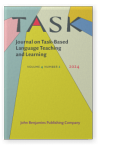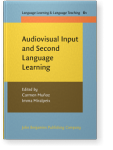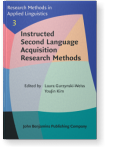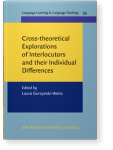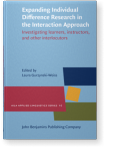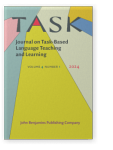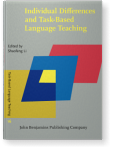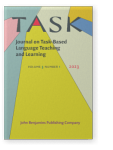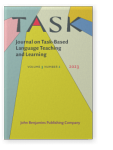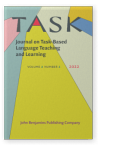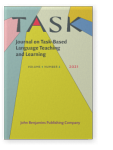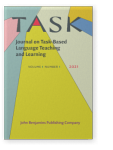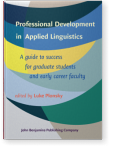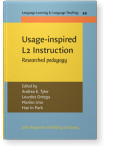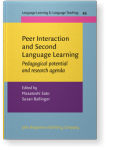Laura Gurzynski-Weiss
List of John Benjamins publications for which Laura Gurzynski-Weiss plays a role.
Journal
Book series
ISSN 1569-9471
Titles
Instructed Second Language Acquisition Research Methods
Edited by Laura Gurzynski-Weiss and YouJin Kim
[Research Methods in Applied Linguistics, 3] 2022. xxiv, 388 pp.
Subjects Applied linguistics | Language acquisition | Language teaching
Cross-theoretical Explorations of Interlocutors and their Individual Differences
Edited by Laura Gurzynski-Weiss
[Language Learning & Language Teaching, 53] 2020. xii, 270 pp.
Subjects Applied linguistics | Language acquisition | Language teaching
Expanding Individual Difference Research in the Interaction Approach: Investigating learners, instructors, and other interlocutors
Edited by Laura Gurzynski-Weiss
[AILA Applied Linguistics Series, 16] 2017. xii, 327 pp.
Subjects Applied linguistics | Language acquisition | Language teaching
2024 Chapter 11. Teacher IDs and task adaptations: Making use of the TBLT Language Learning Task Bank Individual Differences and Task-Based Language Teaching, Li, Shaofeng (ed.), pp. 313–343 | Chapter
This multi-site study explores how 18 graduate-level L2 teacher participants adapted tasks from the TBLT Language Learning Task Bank for specific learner needs and teaching contexts, and if their individual differences (IDs) influenced their adaptations. Participants first completed a… read more
2023 Let’s talk tasks: A conversation between task-based researchers, language teachers, and teacher trainers TASK 3:1, pp. 191–208 | Discussion
2023 Task-specific motivation and development of the Spanish L2 self during domestic immersion TASK 3:1, pp. 140–177 | Article
The present study considers global (Dörnyei’s 2005 L2 selves) and micro (task-specific) measures of motivation in a unique task-based context: a two-week, domestic Spanish immersion program for high schoolers in the United States (Gurzynski-Weiss, in revision). Data was collected from eight… read more
2022 Let’s talk tasks: A conversation between task-based researchers, language teachers, and teacher trainers TASK 2:2, pp. 286–308 | Miscellaneous
2022 Chapter 6. Unique considerations for ISLA research across approaches Instructed Second Language Acquisition Research Methods, Gurzynski-Weiss, Laura and YouJin Kim (eds.), pp. 125–146 | Chapter
In this chapter, which comprises Section III, we discuss several of the most important and impactful considerations that can affect ISLA research design, implementation, and interpretation across methodological approaches. We unpack the use of intact classes, small sample sizes, and recruiting… read more
2022 Chapter 1. Getting started: Key considerations Instructed Second Language Acquisition Research Methods, Gurzynski-Weiss, Laura and YouJin Kim (eds.), pp. 3–28 | Chapter
This introductory chapter orients the reader to both instructed second language acquisition (ISLA) and research methods in general. We begin with an operationalization of ISLA, followed by an outline of the main research questions and overarching goals within ISLA, and specification of the… read more
2022 Chapter 15. Contributing to the advancement of the field: Collaboration and dissemination in ISLA Instructed Second Language Acquisition Research Methods, Gurzynski-Weiss, Laura and YouJin Kim (eds.), pp. 355–378 | Chapter
In this final chapter, we share suggestions for developing ISLA research that informs pedagogy and vice-versa, particularly focusing on the importance of training ISLA researchers, promoting collaboration among various stakeholders, and disseminating ISLA research to a larger audience. First, we… read more
2021 Let’s talk tasks: A conversation between task-based researchers, language teachers, and teacher trainers TASK 1:2, pp. 289–301 | Miscellaneous
2021 A conversation between task-based researchers, language teachers, and teacher trainers TASK 1:1, pp. 138–149 | Editorial
2020 Chapter 13. Preparing for tenure & promotion Professional Development in Applied Linguistics: A guide to success for graduate students and early career faculty, Plonsky, Luke (ed.), pp. 181–202 | Chapter
The present chapter addresses the core issues related to the process of securing tenure with the primary goal of identifying the sources of confusion and making transparent some of the unspoken expectations that tend to dominate the field of applied linguistics. It is our belief that the better… read more
2020 Chapter 10. Synthesizing cross-theoretical explorations of interlocutors and their individual differences Cross-theoretical Explorations of Interlocutors and their Individual Differences, Gurzynski-Weiss, Laura (ed.), pp. 247–266 | Chapter
The theoretical and empirical contributions of this current volume are united in their efforts to examine interlocutors and their individual differences. In this final chapter, I demonstrate how the four approaches – the cognitive-interactionist approach (Philp & Gurzynski-Weiss; Pawlak);… read more
2020 Chapter 1. Introducing cross-theoretical explorations of interlocutors and their individual differences Cross-theoretical Explorations of Interlocutors and their Individual Differences, Gurzynski-Weiss, Laura (ed.), pp. 3–16 | Chapter
2020 Chapter 2. On the role of the interlocutor in second language development: A cognitive-interactionist approach Cross-theoretical Explorations of Interlocutors and their Individual Differences, Gurzynski-Weiss, Laura (ed.), pp. 19–50 | Chapter
In this chapter we examine the role of the interlocutor in second language (L2) learning and use from a cognitive-interactionist perspective, concentrating on oral interaction in face-to-face and (written and/or video) chat-based contexts. We center our discussion on the ways relationship, status,… read more
2018 Chapter 13. Examining multifaceted sources of input: Variationist and usage-based approaches to understanding the L2 classroom Usage-inspired L2 Instruction: Researched pedagogy, Tyler, Andrea E., Lourdes Ortega, Mariko Uno and Hae In Park (eds.), pp. 291–311 | Chapter
Input is a central, driving component in nearly all theories of second language acquisition, but little is known about the relationship between the instructor-provided input to which classroom second language learners are exposed and attested patterns of acquisition. Our study investigates this… read more
2017 Chapter 7. Instructor individual characteristics and L2 interaction Expanding Individual Difference Research in the Interaction Approach: Investigating learners, instructors, and other interlocutors, Gurzynski-Weiss, Laura (ed.), pp. 151–172 | Chapter
This chapter opens the second section of the volume, which focuses on second and foreign language (L2) instructors. After defining the research domain of instructor individual characteristics, the chapter provides an overview of the role(s) of the instructor situated within the interaction… read more
2017 Chapter 1. Expanding individual difference research in the interaction approach: Investigating learners, instructors, and other interlocutors Expanding Individual Difference Research in the Interaction Approach: Investigating learners, instructors, and other interlocutors, Gurzynski-Weiss, Laura (ed.), pp. 3–15 | Chapter
2017 Chapter 13. Look who’s interacting: A scoping review of research involving non-teacher/non-peer interlocutors Expanding Individual Difference Research in the Interaction Approach: Investigating learners, instructors, and other interlocutors, Gurzynski-Weiss, Laura (ed.), pp. 305–324 | Chapter
Despite the presence of non-teacher/non-peer learner interlocutors in primary (e.g., Gass and Varonis, 1985; M. H. Long, 1983; Varonis & Gass, 1985a, 1985b) and meta-analytic (Li, 2010) studies, and in interactionist theory and review articles (M. H. Long, 1996; Mackey & Goo, 2007), the… read more
2017 Chapter 10. Linguistic variation in instructor provision of oral input Expanding Individual Difference Research in the Interaction Approach: Investigating learners, instructors, and other interlocutors, Gurzynski-Weiss, Laura (ed.), pp. 225–253 | Chapter
The current study examines the variable use of verbal subjects (e.g., explicit yo hablo vs. null hablo ‘[I] speak’), in oral production by five native-speaking instructors directed to Spanish foreign language (FL) learners in a university setting. Our data consisted of instructors’ oral… read more
2016 8. Engagement with the language: How examining learners’ affective and social engagement explains successful learner-generated attention to form Peer Interaction and Second Language Learning: Pedagogical potential and research agenda, Sato, Masatoshi and Susan Ballinger (eds.), pp. 209–239 | Article
Interactive tasks that have successfully promoted attention to form and language learning in face-to-face (FTF) can be ineffective when performed online (Baralt 2013, 2014). This research is concerning, given the push for online language classes in higher education (Leow, Cerezo, & Baralt 2015).… read more
